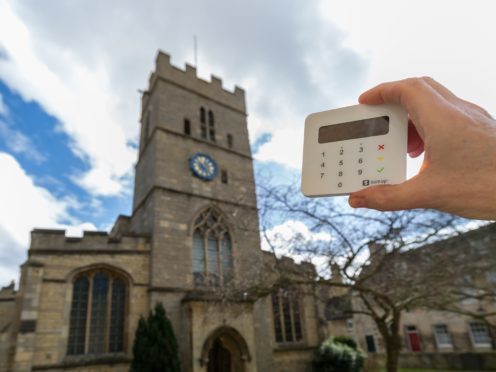The Church of England is bringing the collection plate into the digital age with the introduction of contactless payment terminals across every diocese.
As of today, the CofE is making portable card readers available to more than 16,000 churches, cathedrals and religious sites with the aim of making donations and transactions faster and easier for congregations.
The readers can take contactless payments, Apple Pay and Google Pay, as well as chip and pin transactions.

Each reader, whose technology is run by the London-based fintech company SumUp, needs a “merchant”, most likely a Church worker, to input each transaction, and a probable scenario will see members of the congregation walking past a manned device as they enter or leave a service or event.
The readers, which were tested during a trial involving 40 churches last year, are capable of supporting 500 transactions without recharging, although the vast bulk of regular donating is expected to continue by standing order.
The Church said it had been looking at how to update how congregations make donations, to a total of around £580 million every year, in an increasingly cashless society.
It has also been investigating how to offer payment options to visitors at events such as weddings, funerals, christenings, church fetes and concerts, who are not necessarily prepared for the collection plate.
John Preston, national stewardship officer at the Church of England, said: “There is a clear need for our parishes to introduce card and contactless facilities and we are excited to make this available.
“How we pay for things is changing fast, especially for younger church-goers who no longer carry cash, and we want all generations to be able to make the most of their place of worship.”
Alison Davie, church secretary at St George’s Church Hub, in Stamford, Lincolnshire, said: “Our parishioners can occasionally find themselves strapped for physical cash, so it’s fantastic to be able to offer an alternative which is quick and convenient.
“We hope this is a step forward for St George’s and many other churches like it, in staying ahead in the modern era.”
